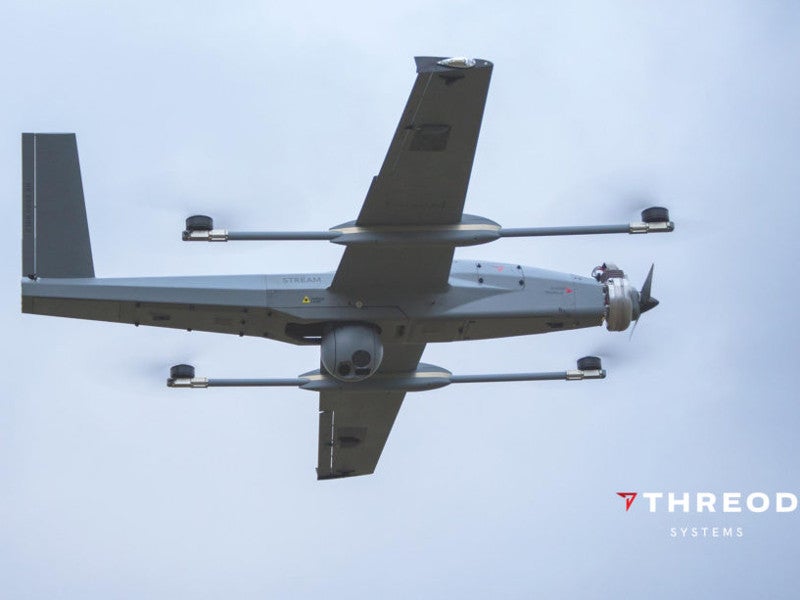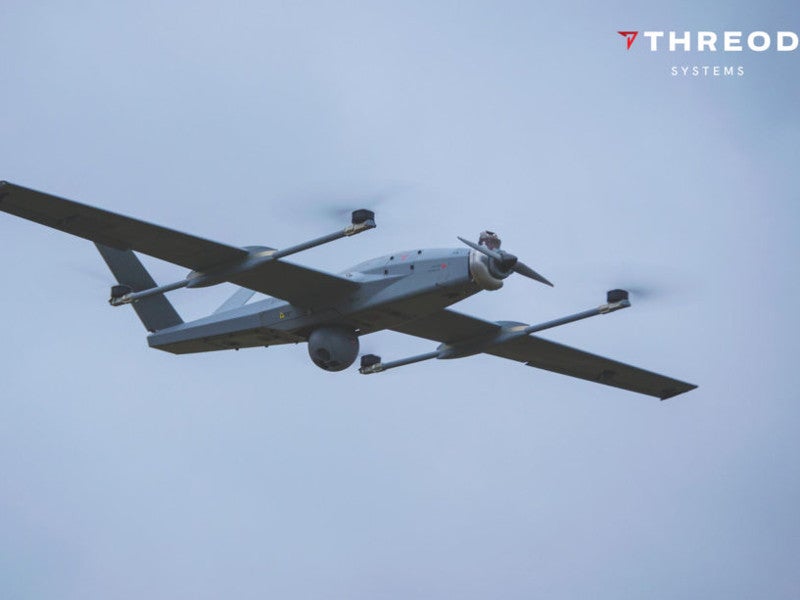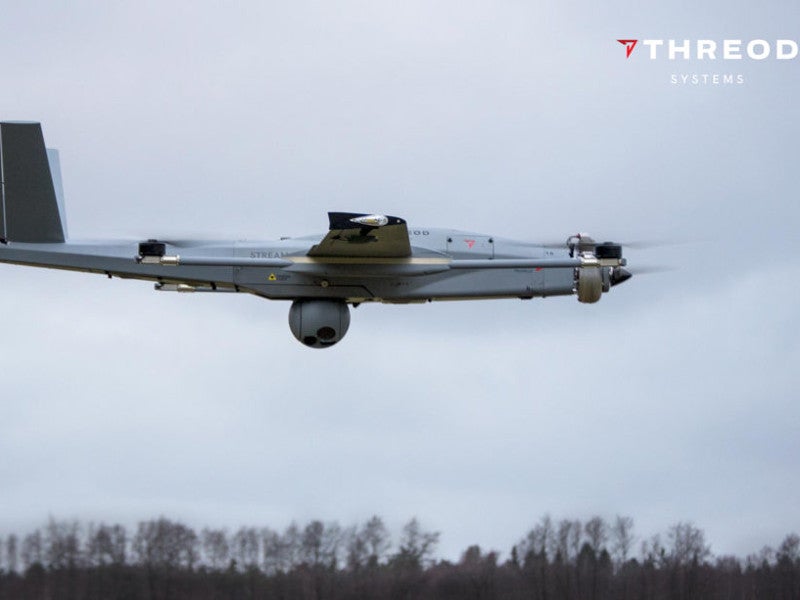Stream C is a new vertical take-off and landing (VTOL) unmanned aircraft system (UAS) designed and developed by Threod Systems, a specialised UAS manufacturing company based in Estonia. It is classified as a NATO class I unmanned aerial vehicle (UAV).
The VTOL UAS will perform a range of missions including rescue, imagery, geo-positioning, and intelligence, surveillance and reconnaissance (ISR).
The Stream C UAS is scheduled to be unveiled at the international defence exhibition IDEX 2019 to be held in Abu Dhabi in February 2019.
Stream C UAS design and features
Stream C features a fixed-wing design with VTOL capability and a rugged and modular design allowing for the integration of a range of payloads with ease. It can carry heavy payloads weighing up to 6kg in total.
The VTOL feature improves the performance of the UAS and enables launch from challenging and constricting environments such as forest areas, raised compounds, and other urban conditions. It also allows the UAS to launch from the deck of rescue vehicles, patrol vessels, and battleships.
Overall length of the Stream C UAS is 2.3m, while its wingspan is 3.9m. The maximum take-off weight (MTOW) of the light-weight unmanned aircraft is 30kg.
Payload and communication system of Stream C UAS
The UAS carries a suite of multi-sensor payloads for performing operations such as surveillance, reconnaissance, mapping, geo-positioning, and moving object detection and tracking.
Its major payload is an Orca gimbal, which houses cooled mid-wave infrared (MWIR) sensor, electro-optical (EO), sensor and a laser finder. The Orca gimbal provides gyro and image stability with 360o pan and tilt options.
The MWIR sensor is a non-international traffic in arms regulations (ITAR) system with a near field of view (NFOV) of 2o×1.6o and wide field of view (WFOV) of 29.8o×24.1o. The MWIR sensor equipped with 18-275mm lens provides imagery with a resolution of 720p. The system is capable of detecting vehicles at 15km range and humans at a 9km distance.
The EO sensor can capture 30x optical zoom or 2x digital high-definition (HD) video with 720p resolution. The laser rangefinder is capable of measuring ranges up to 8,000m. The Stream C UAS also carries an aerial mapping sensor offering a maximum resolution up to 50MP.
Stream C uses dual frequency to communicate with the ground controller over a distance of 100km in the line-of-sight. It can send and receive data through a mesh network while employing 256-bit encryption of advanced encryption standard (AES).
The UAS can generate high-definition (HD) live streaming videos, with an option for selectable recording. It is capable of generating KLV metadata in accordance with STANAG 4609 standards.
Ground control station for Stream C UAS
The UAS is controlled by a hand-held ground control station (GCS) based on a Panasonic Toughbook tablet. The rugged design integrates a keyboard and a touch-screen-enabled control station equipped with an autonomous flight control system (AFCS), a guided flight control system, a joystick panel, and an emergency landing button.
The light-weight GCS ensures communication through the embedded data link system with a range of 5km.
Launch and recovery
The UAS can be launched from a standalone aluminium profile launching system equipped with a battery-powered compressor. The air-powered launcher system can be controlled from the GCS. It ensures a quick assembly, and easy take-off at a launch speed of 20m/s.
Recovery of the UAS is performed by a parachute landing system.
Performance of Stream C UAS
The Stream C VTOL UAV’s power-plant enables it to attain flight speeds ranging between 80km/h and 130km/h. Its maximum operational altitude above the ground level is 3,000m.
With full payload, the UAS can endure airborne for up to eight hours.






